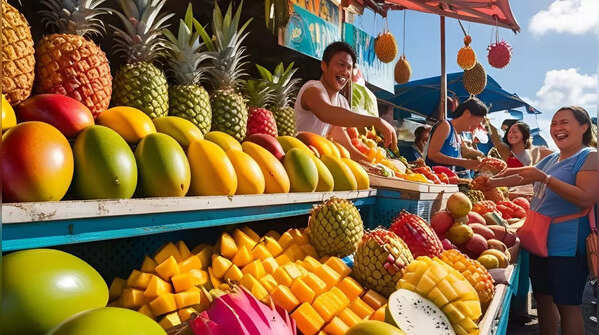7 most poisonous fruits in the world

7 most poisonous fruits that you must avoid
Even nature has its own vices. While some fruits we eat are packed with loads of nutrients, others carry with them a secret ingredient that could lead to death. In an interview with CNN, Peter Spencer, professor of neurology and occupational health sciences at Oregon Health and Science University, shared that "The idea that all natural things are good for you is rubbish. We are eating [fruits and] vegetables that potentially contain bad things." He added that many plants "were not put here for our benefit but to protect themselves from predators." Find out nature's 7 most poisonous fruits!
Image credits: Canva

Pong Pong Tree
Featured in the HBO series, 'White Lotus', the fruit of the pong pong tree is so deadly in Southeast Asia that it has gained the nickname "suicide tree." The pong pong tree belongs to the dogbane family of plants that are known for producing poisons. Found in Southeast Asia, Pacific Island and northern Australia, the tree contains a poison called cerberin. Mostly concentrated in the seeds of the fruit, cerberin is a glycoside that attacks the heart. It is absorbed in the bloodstream from the stomach and can onset symptoms such as nausea, vomiting and diarrhoea within 20-30 minutes of consumption. As per a study published in 2004, the tree was responsible for half of the plant poisoning cases in Kerala from 1989-1999.
Image credits: Getty Images

Manchineel
Manchineel, also known as the "apple of death" is a green-coloured fruit similar to apples in look, smell and even taste. However, unlike apples, the sap of this fruit contains phorbol and hippomane toxins that can cause severe burns on the skin and unbearable pain. Mostly found in the Caribbean, Mexico, South America and parts of South Florida, even touching or consuming the sap of the fruit can lead to gastrointestinal disorders and even death. Interestingly, it is said that droplets from the fruit are powerful enough to damage car paint.
Image credits: iStock

Cherries
Remember how you sometimes end up chewing on or swallowing the seed of a fruit accidentally? Well, try to avoid that with cherries. These shiny little fruits of flavour carry with them seeds that could kill you. Yes, according to a published on ResearchGate, the seeds within the cherry fruit contain a poisonous compound called hydrogen cyanide. While the accidental one or two seeds might not matter, if had in a larger amount it can cause seizures, apnea and even a cardiac arrest followed by death.
Image credits: iStock

Star Fruit
Star fruit is one fruit that is available worldwide. The juicy, tangy and sweet fruit resembles the shape of a star after cutting and is loved by many. However, behind the star-like appearance hides a hidden poison. As per a published on the National Institute of Health (NIH) website, star fruit or carambola contains high amounts of oxalates that can combine with calcium to form kidney stones and crystals, and lead to kidney damage. They are extremely hazardous for people already suffering from kidney conditions.
Image credits: iStock

Jatropha
Jatropha is a plant that can be found in tropical or sub-tropical climates across the world. The seeds in these sweet and bright yellow berries contain the highest concentration of a toxin called ricin that can lead to vomiting, diarrhoea, abdominal pain and a burning sensation in the throat. However, in India, there have been a lot of cases of children getting poisoned from this fruit. A published in the International Journal of Medical Research and Review analysed the data from the year 2004 to 2013 and found a total of 169 cases of acute Jatropha poisoning in children. This is the most common case in the Bilaspur district of Chhattisgarh where the plant is grown for biodiesel production.
Image credits: iStock

Lychee
Lychee, one of the most favourite fruits in the country, can also be poisonous. These beautiful red berries must not be eaten before ripe as then, they contain a toxin called methylene cyclopropyl-glycine (MCPG). When consumed excessively these can cause encephalitis-related death. In Bihar, where lychee is grown as a commercial crop, a series of deaths due to lychee toxicity were reported in various years from 2011 to 2014. A published by the National Institute of Health (NIH) reported the toxin of the fruit as the cause of hypoglycemia and encephalopathy.
Image credits: iStock

Sea Buckthorn Berries
Sea Buckthorn Berries, also known as Leh berries or Himalayan berries are orange-coloured berries that look very appealing and sweet but are poisonous when consumed. These berries can lead to gastrointestinal issues, blood thinning, low blood sugar and in some cases burning sensations that can lead to a rash, as per a published in ScienceDirect.
Image credits: iStock








